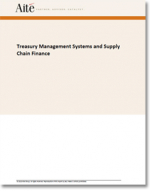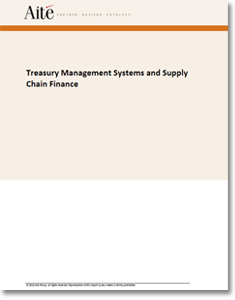Treasury Management Systems and Supply Chain Finance
Decisions on how to best invest available cash or on how to extract cash trapped in working capital require new discipline and knowledge of SCF instruments.
The continual transformation of the financial markets and the dynamics of the credit crunch have brought to the forefront the importance for corporate executives to go beyond banks as the only source of funds for the company’s operations and, instead, adopt solutions that allow liquidity to be extracted from the business’s internal operations.
Although the practices of supply chain finance (SCF) have been described extensively in recent years, education and information are still important factors for the successful implementation of SCF programs.
In fact, SCF is more than a set of discrete financial products. It is rather a disciplined—and collaborative—approach to improving the working capital ratios of the entire network of supply chain partners.
Supply chain finance allows organizations to achieve results that measure the success of how corporate chief finance officers (CFOs) and treasurers conduct their business and add value to their company.
This document is a white paper on the market definitions and opportunities for SCF. The goal is to identify the most effective IT platform that corporate treasurers should use to fully deploy (and enjoy the benefits of) SCF programs.
The scenario proposed in this paper is that treasury TMSs can provide the right technology solution to support the execution of complex business problems. The document will also demonstrate that the integration between TMS technology and SCF solutions is today not a nice-to-have option but has become almost a necessity.
Supply chain finance is based primarily on the foundation of integrating data and information from different sources, and modern treasury management systems can establish the platform that aggregates and distributes transactional data and information to all the stakeholders involved in the SCF exercise (e.g., buyers, suppliers, logistics providers, financial institutions).
With technology today reaching new peaks of effectiveness, cloud computing allows corporations to accomplish the task of integrating various sources of data in a streamlined way. Software applications no longer require expensive infrastructures and time-consuming implementation projects.
SaaS is the new IT paradigm that provides the foundation for SaaS-based treasury management system to become the likely platform that will allow corporate treasurers to enjoy the benefits of SCF initiatives without the concern of having to install yet another technology stack on their already chaotic IT portfolio.
This document is based on the assumption that a SaaS-based TMS is the likely platform for SCF solutions that corporate treasurers will use.
What’s Related

Favorites





